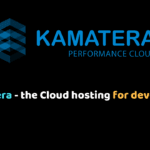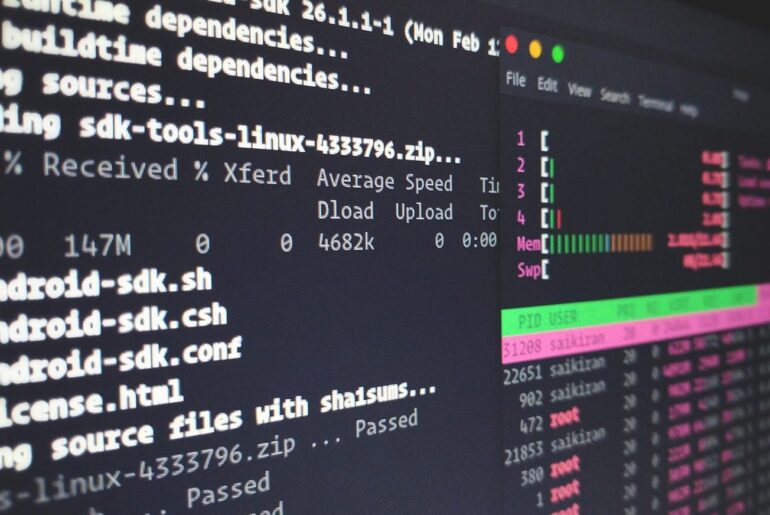When a small team aims to host a web app, site, or service, they must pick infrastructure aligned with their budget, skills, and growth plans. That decision often falls between a managed/shared host (Bluehost) and a more “bare metal” cloud provider (DigitalOcean). The right choice can save you money, headaches, or friction down the road.
Before proceeding, make sure you’ve created a DigitalOcean account with billing enabled (credit card or other method). Many of the examples below require you to spin up “Droplets” or test configurations.
In what follows, I walk through real pricing tiers, deployment examples, operational costs, and usability trade-offs. I compare “what you pay vs what you get” for small team use cases (e.g. a website + API backend, modest traffic, occasional scaling). Use this as a decision lens, not as absolute truth.
Pricing & Cost Examples
To decide rationally, you must compare apples to apples: compute, storage, bandwidth, backups, and management overhead. Below I lay out base pricing snapshots (as of 2025) and then build example stacks.
DigitalOcean pricing snapshot
- The smallest “Droplet” starts at $4/month (1 vCPU, 512 MB RAM, 10 GB SSD, 500 GB transfer)
- More usable general purpose droplets begin around $12–$24/month for 2–4 GB RAM, more disk, etc.
- DigitalOcean supports hourly billing, so if you spin a droplet for part of a month, you’re billed proportionally.
- Additional services add cost:
• Managed Databases (PostgreSQL / MySQL)
• Block Storage volumes (attach additional SSD)
• Snapshots / backups
• Load balancers, object storage, etc.
Because of hourly billing, you can start tiny and scale or even shut things off in low traffic times.
Bluehost pricing snapshot & tiers
Bluehost’s model is more “plan-based,” often with promotional discounts but with renewal hikes and bundled features.
- Shared / WordPress plans start as low as $1.99/month as a promotional rate (for initial term)
- But that “cheap rate” is for limited time and long-term contracts. After renewal, rates tend to jump (often 2–3×)
- Bluehost’s VPS plans begin in the ballpark of $30–$50/month (varying by term)
- Dedicated and higher tiers can reach $100+/month.
Because Bluehost bundles management, domain, SSL, and one-click tools, you pay more “all-in” but get more turnkey features.
Example stacks & comparative cost
Suppose your small team wants to host:
- A web front-end (e.g. React or static site)
- An API backend (e.g. Node.js or Python Flask)
- A relational database (e.g. PostgreSQL)
- Occasional scaling or load distribution
Let’s sketch two minimal viable stacks and compare:
| Component | DigitalOcean build | Bluehost alternative | Notes / caveats |
|---|---|---|---|
| Web + API server | One Droplet, 2 vCPU, 2 GB RAM (approx $12-$24/mo) | Use Bluehost’s VPS or “Cloud” plan (e.g. $30–$50+/mo) | With DigitalOcean you manage OS, web server, stack |
| Database | Managed DB (from DO) or another Droplet | Usually included or part of the plan (if allowed) | DO’s managed DB is extra cost; Bluehost abstracts this |
| Storage / media / assets | Use block storage or Spaces (object store) | Included into plan quotas | DO gives flexibility to separately scale storage |
| Backups / snapshots | You pay snapshot fees, manage retention | Often built-in or add-on benefit | With Bluehost, backups may be baked in or part of plan |
| Load balancing / scaling | Add load balancer + spin new droplets dynamically | You may need to upgrade plan / migrate to bigger instance | DO is more modular in scaling |
Estimated cost comparison (very rough) for moderate small-team stack:
- DigitalOcean:
• Droplet (2 vCPU, 2 GB): $12–$24
• Managed DB: e.g. $15–$30
• Block storage / snapshots / load balancer: maybe $5–$20 more
→ Total ~ $35–$75/month (depending on redundancy, traffic, region) - Bluehost:
• VPS / Cloud plan: $30–$50+
• You may have less visibility into scaling costs, or need to upgrade to next tier when load increases
• Renewal risk: the price you lock in for first contract may rise significantly afterward
In many real cases, for equivalent spec machines, DigitalOcean ends up cheaper or at least more flexible because you pay only for unused bits, and you can “right-size” more aggressively.
Usability, Onboarding & Workflow Examples
Let’s walk through how deployment and operations differ in practice, for a small team building a modern web app.
Setup and deployment
On DigitalOcean
- Log in, spin up a Droplet of your choice (Ubuntu, CentOS, etc.), associate an SSH key.
- SSH in, install your runtime (Node, Python, etc.), web server (nginx), SSL (Certbot).
- Deploy via Git, CI/CD, or container images.
- Configure firewall, monitoring, scaling rules.
- Optionally add a managed database, object storage (Spaces) or load balancer.
Example commands (Ubuntu + Nginx + Python):
sudo apt update
sudo apt install -y nginx python3-pip
# clone your app repo
git clone https://your-repo.git /opt/app
cd /opt/app
pip3 install -r requirements.txt
# configure gunicorn / systemd service, template nginx
sudo systemctl restart nginxYou then scale by resizing the droplet or adding more nodes behind a load balancer.
On Bluehost
- Select a plan (shared / VPS / cloud) and set domain.
- If your plan supports SSH, upload or git-pull your app. For PHP/WordPress, you may use one-click installers.
- Use Bluehost’s dashboard / cPanel to manage SSL, backups, domain DNS, and settings.
- If traffic grows, upgrade to a higher tier or a different plan (VPS / Cloud).
Because Bluehost abstracts much of the OS and infrastructure, you often lack direct control of scaling behavior (you’re constrained to the tiers they offer).
Maintenance & scaling
- DigitalOcean demands that you patch OS, manage security, scaling logic, alerts, and possibly write infrastructure-as-code. But you get full control over how and when you scale.
- Bluehost handles many routine operational tasks for you (patching of managed environments, backups in some plans, SSL provisioning). You pay for that convenience.
- For scaling: with DigitalOcean, you can horizontally scale (spin new droplets, auto-scale), add load balancers, detach heavy workloads. With Bluehost, scaling often means “move to next plan,” which may involve downtime or migration steps.
Risks, Hidden Costs & Practical Considerations
- Renewal shock on Bluehost: Many users report that after the initial discounted period, Bluehost renews at much higher rates.
- Unsubsidized features: On DigitalOcean, components like snapshots, backups, load balancers cost extra. If you forget to delete idle droplets or unused block storage, your bills creep.
- Operational burden: The “cost” of DigitalOcean is partly in developer time. If your team lacks infrastructure skills, the overhead may outweigh the cost advantage.
- Lock-in vs flexibility: Bluehost’s abstraction simplifies things but can lock you into their environment. Migrating later could require re-architecting.
- Performance & reliability: DO publishes a 99.99% SLA on its core compute offerings. Bluehost does not consistently offer such guarantees. Users benchmarking DO vs Bluehost often find DO more stable under load.
- Geographic considerations: Your team’s location (e.g. Norway) may influence latency, available data center regions, and bandwidth costs. Always test from your target user base.
Recommendation & Decision Path
If I were advising a small team, here’s how I’d approach:
- Start with your team’s skill set. If you have someone comfortable with Linux, shell, ops, go DO. If not, Bluehost’s convenience may reduce friction and failure mode.
- Project lifetime & growth expectation. For a short-lived prototype or low-traffic site, Bluehost is easier. But if you expect growth, DO gives you room to evolve.
- Run a cost forecast. Estimate traffic, need for database, scaling windows. See whether DO or Bluehost’s higher tiers become more expensive.
- Prototype on DO early. Even if you start on Bluehost, test your stack on DigitalOcean in a staging environment. That gives you a path for migration if needed.
- Monitor and revisit decisions. If you hit resource limits or cost thresholds, re-evaluate whether moving to DO (or a hybrid) benefits you.










